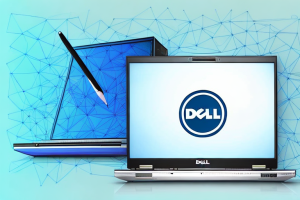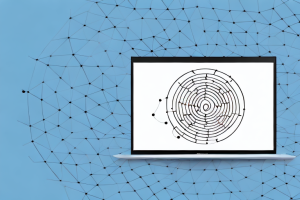How to optimize storage space on a Dell Latitude E7250
8 min read
A dell latitude e7250 laptop with various storage devices connected to it
If you’re using a Dell Latitude E7250, you might notice that the storage is limited, which can be frustrating if you’re running out of space for important files or programs. However, there are many ways to optimize your storage space and make the most of what you have. In this article, we’ll explore some tips and tricks to help you free up space, clean up your hard drive, and configure settings to optimize your Dell Latitude E7250’s storage capacity.
Understanding the Storage Capacity of Dell Latitude E7250
Before we dive into optimizing your Dell Latitude E7250’s storage capacity, it’s important to understand the basic specifications of the device’s storage. This laptop comes with a standard capacity of 128GB or 256GB SSD (solid-state drive). Keep in mind that the actual capacity may be less due to the operating system and any pre-installed software taking up space.
It’s also worth noting that the Dell Latitude E7250 allows for easy storage expansion through its M.2 slot. This means that you can add an additional SSD or HDD (hard disk drive) to increase your storage capacity. However, it’s important to check the maximum capacity supported by your device before purchasing a new drive.
Tips to Free up Space on your Dell Latitude E7250
One of the easiest ways to free up space on a Dell Latitude E7250 is to uninstall any programs you no longer need. To do this, go to Control Panel > Programs and Features and select the program you want to remove. You can also check the storage capacity of your device and delete any large files or folders that you don’t need.
Another way to optimize storage space is to disable hibernation mode. By default, this mode takes up a significant amount of space on the hard drive. To turn it off, go to Control Panel > Power Options and select “Change plan settings” for the selected power plan. Then, click on “Change advanced power settings” and then “Sleep.” From here, you can toggle off hibernation mode to save space.
Additionally, you can use disk cleanup to remove temporary files and other unnecessary system files. To access disk cleanup, go to the Start menu and search for “Disk Cleanup.” Once opened, select the drive you want to clean up and click “OK.” The tool will then scan your device for files that can be safely removed.
Finally, consider using cloud storage services such as Dropbox or Google Drive to store files that you don’t need to access frequently. This can help free up space on your device while still allowing you to access your files from anywhere with an internet connection.
How to Clean up your Hard Drive on Dell Latitude E7250
Cleaning up your hard drive is another great way to free up space. You can use Disk Cleanup, a built-in Windows utility, to remove temporary files and other data that is no longer needed. To access Disk Cleanup, go to the Start menu and type “disk cleanup” in the search field. Then, select the drive you want to clean up (usually the C: drive) and follow the prompts.
In addition to using Disk Cleanup, you can also manually delete files and programs that you no longer need. This can include old documents, photos, and videos, as well as programs that you haven’t used in a while. To do this, simply go to the folder or program you want to delete, right-click on it, and select “Delete.” Keep in mind that once you delete a file or program, it cannot be recovered, so make sure you are certain before deleting anything.
Analyzing Disk Space Usage on Dell Latitude E7250
If you’re unsure where the majority of your storage space is being used, you can use software like TreeSize or WinDirStat. These programs analyze the disk space and provide detailed information on which files and folders are taking up the most space. With this information, you can easily identify and delete any unnecessary files.
Removing Unnecessary Files and Programs on Dell Latitude E7250
If you notice that certain files and programs are taking up a lot of space on your Dell Latitude E7250, it’s a good idea to delete them. Consider removing any unnecessary videos, music, or photos, especially those that have been duplicated. You can also uninstall any programs you don’t use anymore, which can free up a significant amount of space.
In addition to deleting unnecessary files and programs, you can also use disk cleanup tools to further optimize your Dell Latitude E7250’s storage. These tools can help you identify and remove temporary files, system files, and other items that are no longer needed. Additionally, you can consider using cloud storage services to store your files and access them from anywhere, freeing up space on your device.
Utilizing External Storage Devices with your Dell Latitude E7250
If you frequently work with large files, such as videos or high-resolution images, you may want to consider using an external hard drive or a USB flash drive. These portable devices can store large amounts of data, and you can easily transfer files back and forth between your Dell Latitude E7250 and the external device.
It is important to note that when using external storage devices, you should always safely eject the device before unplugging it from your laptop. This will prevent any data loss or corruption that may occur if the device is removed while files are still being transferred. Additionally, it is recommended to regularly back up your important files to an external device to ensure that you always have a copy in case of any unexpected data loss.
Migrating Data to Cloud Storage on Dell Latitude E7250
Another way to free up space on your device is to move files to cloud storage solutions like OneDrive or Google Drive. You can easily upload files to these services and access them from any device with an internet connection. This is also an excellent backup solution, as it helps to protect against data loss.
When migrating data to cloud storage, it is important to consider the security of your files. Make sure to choose a reputable cloud storage provider that offers encryption and other security measures to protect your data from unauthorized access. Additionally, it is recommended to regularly back up your files to multiple cloud storage services to ensure redundancy and further protect against data loss.
Another benefit of using cloud storage is the ability to easily share files with others. Instead of emailing large files or using physical storage devices, you can simply share a link to the file stored in the cloud. This can save time and resources, especially when collaborating on projects with others who may be in different locations.
Setting up Automatic File Cleaning on Dell Latitude E7250
Your Dell Latitude E7250 can be configured to automatically clean up any unnecessary files, which can help you free up space on an ongoing basis. To do this, go to Control Panel > System and Security > Administrative Tools > Task Scheduler. From here, you can create a task that runs regularly and deletes temporary files, logs, and other data that is no longer needed.
It is important to note that while automatic file cleaning can be helpful, it is not a substitute for regular manual file maintenance. It is still recommended that you regularly go through your files and delete any that are no longer needed, as well as organize your files into folders for easier access and management.
Configuring the Recycle Bin Settings on Dell Latitude E7250
If you frequently delete files, you may want to consider reducing the size of your Recycle Bin. By default, the Recycle Bin takes up a significant amount of space on your hard drive. To reduce its size, right-click on the Recycle Bin icon on your desktop and select “Properties.” From here, you can adjust the maximum size of the Recycle Bin and set it to automatically delete files after a certain amount of time.
It is important to note that reducing the size of your Recycle Bin may result in the permanent deletion of files that exceed the new maximum size. Therefore, it is recommended that you regularly review the contents of your Recycle Bin before emptying it.
In addition to adjusting the size and deletion settings of your Recycle Bin, you can also customize its appearance. Right-click on the Recycle Bin icon and select “Personalize” to choose a different icon or change its name. This can be helpful if you have multiple Recycle Bins on your desktop or if you want to easily distinguish it from other icons.
Optimizing Windows Settings for Better Disk Cleanup on Dell Latitude E7250
There are various settings you can configure in Windows to help optimize storage space on your Dell Latitude E7250. For example, you can lower the quality of images and videos that are saved to your device and delete any unnecessary user accounts that are no longer needed.
Another way to optimize your Dell Latitude E7250 is to use the Disk Cleanup tool. This tool helps you to remove temporary files, system files, and other unnecessary files that are taking up space on your device. You can access the Disk Cleanup tool by typing “Disk Cleanup” in the search bar and selecting the option from the results.
In addition, you can also use the Storage Sense feature in Windows to automatically free up space on your device. This feature helps you to delete temporary files and files that have been in the recycle bin for more than 30 days. You can turn on Storage Sense by going to Settings > System > Storage and toggling the switch to “On”.
Understanding the Role of System Restore Points in Managing Storage on Dell Latitude E7250
System Restore Points are a built-in feature in Windows that allow you to go back to a previous state if something goes wrong. However, these Restore Points can take up a significant amount of space on your hard drive. To reduce the amount of storage used, you can limit the number of Restore Points or turn off the feature entirely.
Creating Backups and Restoring Data on Dell Latitude E7250
It’s crucial to regularly create backups of your important files and data to protect against data loss. You can use external hard drives, cloud storage solutions, or dedicated backup software to create backups. If you need to restore data, you can easily transfer it back to your Dell Latitude E7250 and free up more space.
Checking for Malware and Viruses that Could be Taking up Space on Your Dell Latitude E7250
If you notice that your device is slowing down or running out of space faster than usual, it’s possible that malware or viruses are taking up space. You can use anti-virus software to scan your device for any malicious software and remove it to free up space.
Customizing Windows Settings to Save Disk Space on Your Dell Latitude E7250
Finally, you can customize various Windows settings to save disk space further. For example, you can change the location of the Downloads folder or move the Page File to another drive.
Conclusion: Summary of Tips and Tricks to Optimize Storage Space on Your Dell Latitude E7250
In conclusion, there are many ways to optimize storage space on your Dell Latitude E7250. From deleting unnecessary files and programs to configuring settings and utilizing external storage devices, you can free up space and make the most of what you have. Remember to regularly clean up your hard drive, create backups of important data, and check for malware to keep your device running smoothly.


